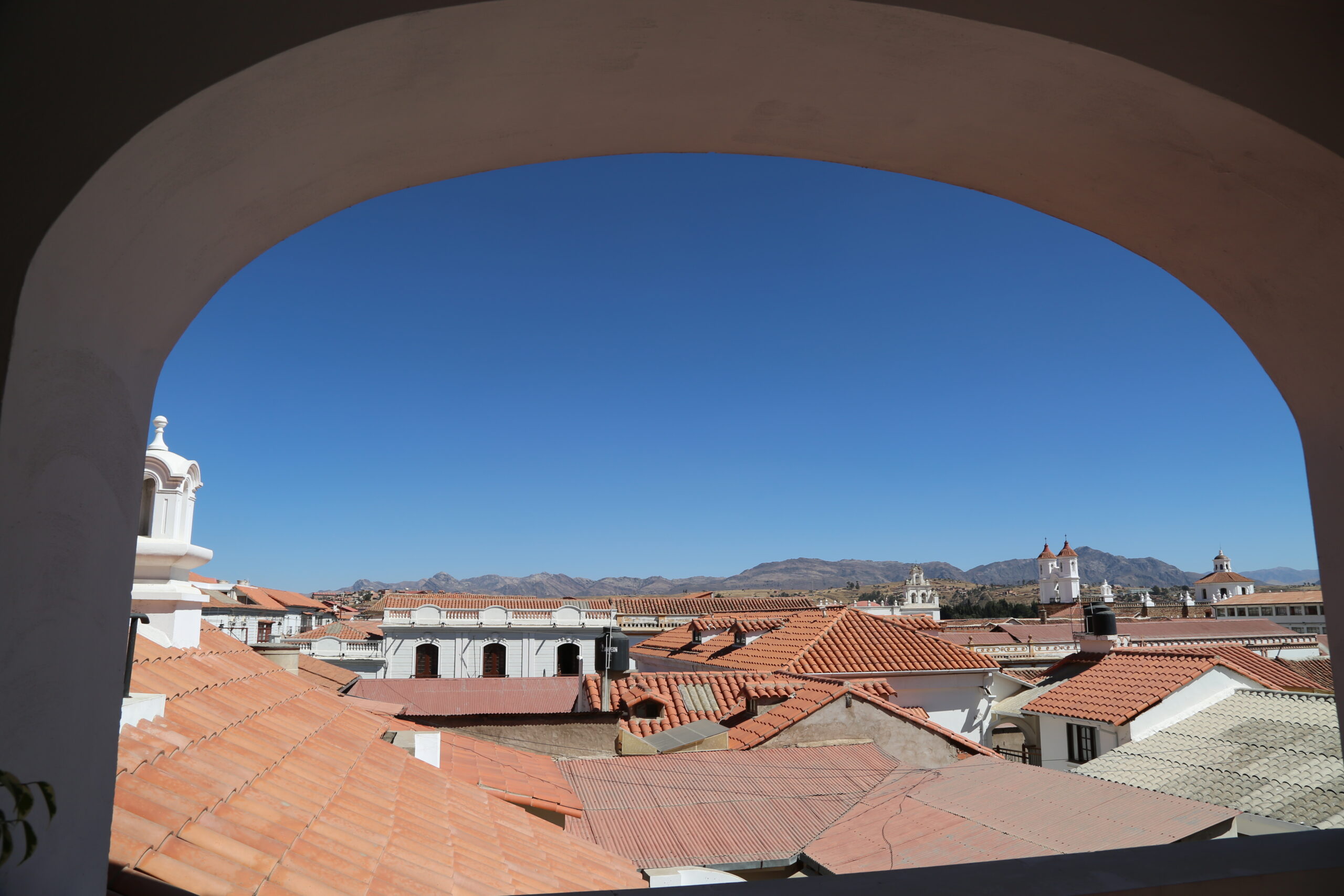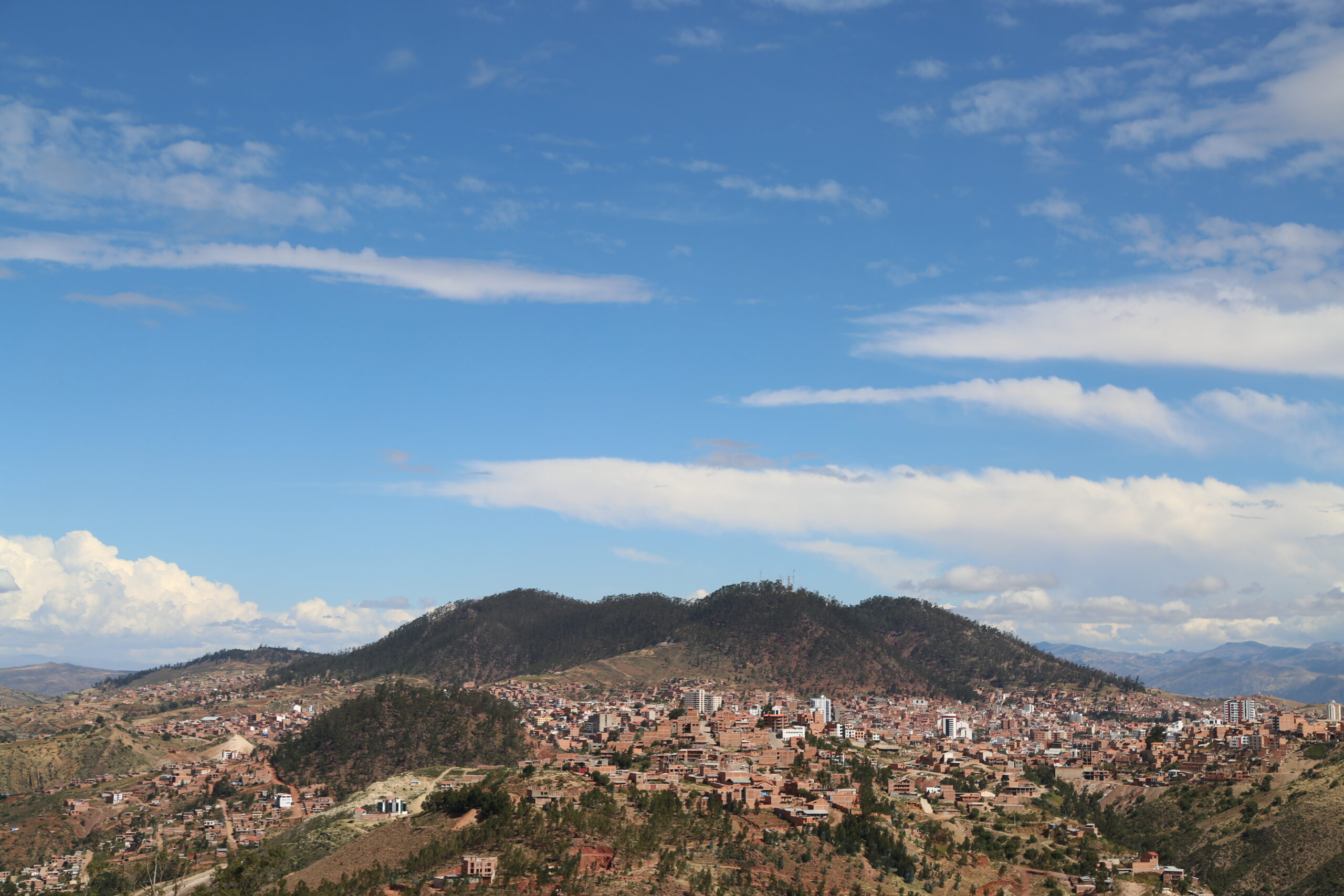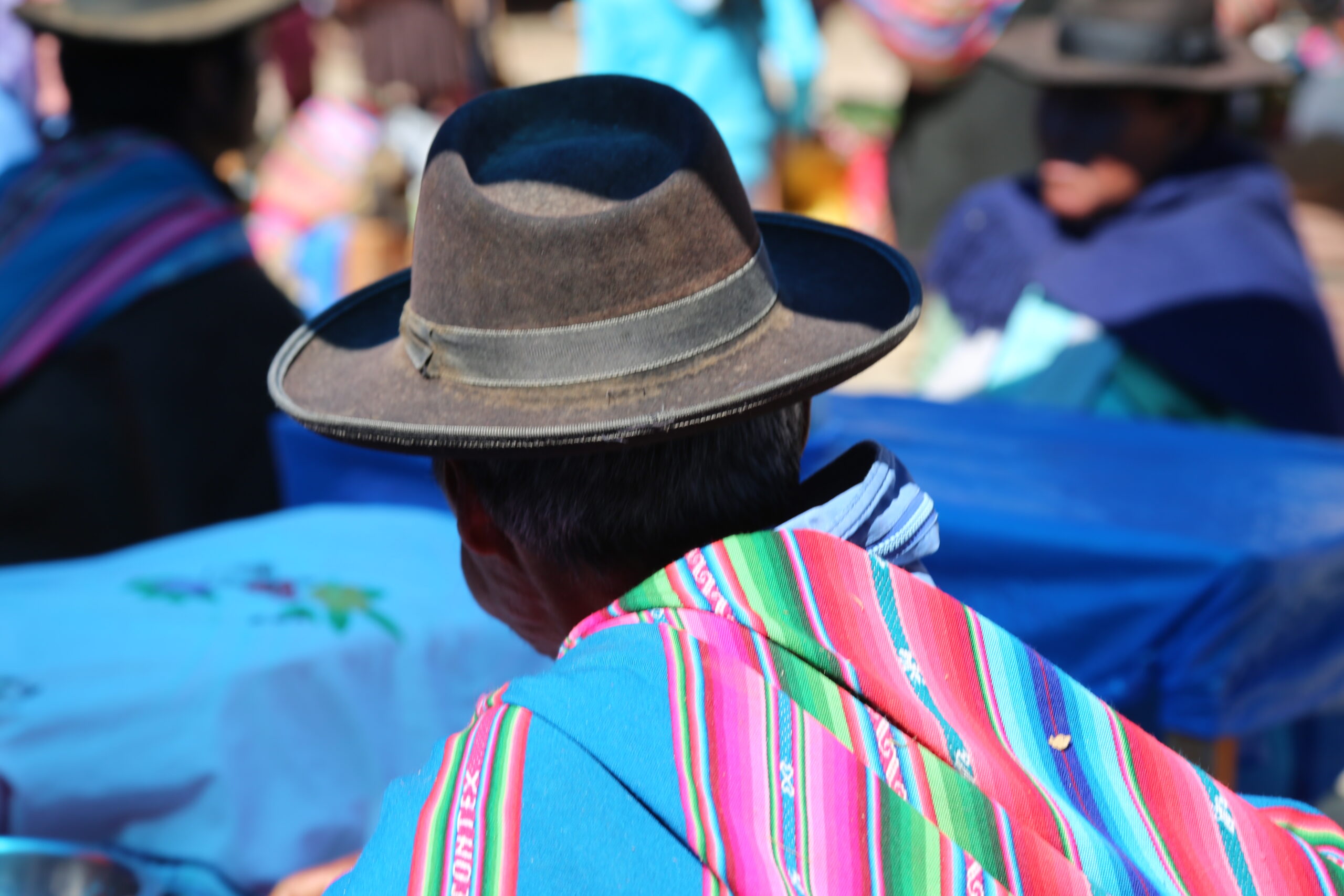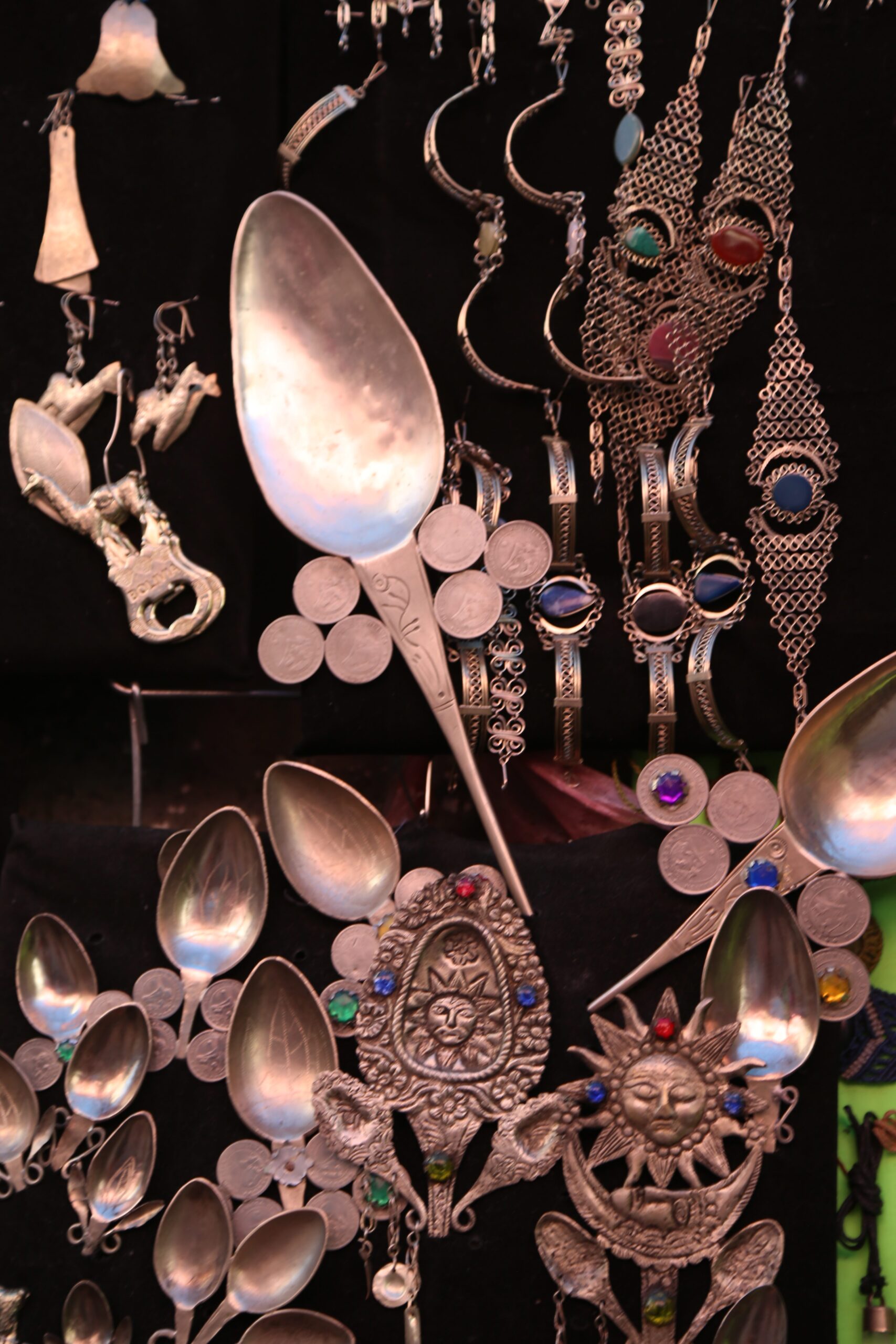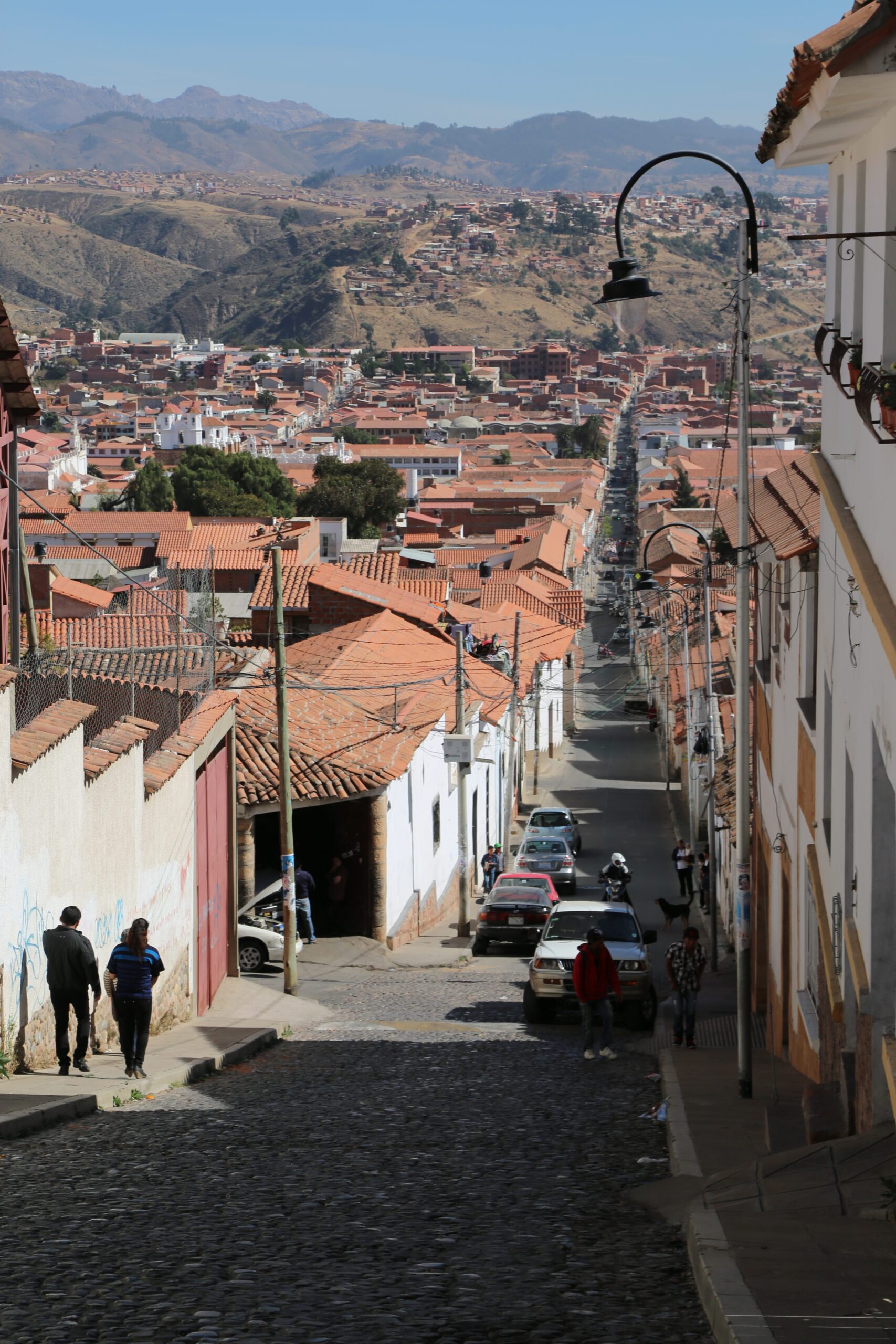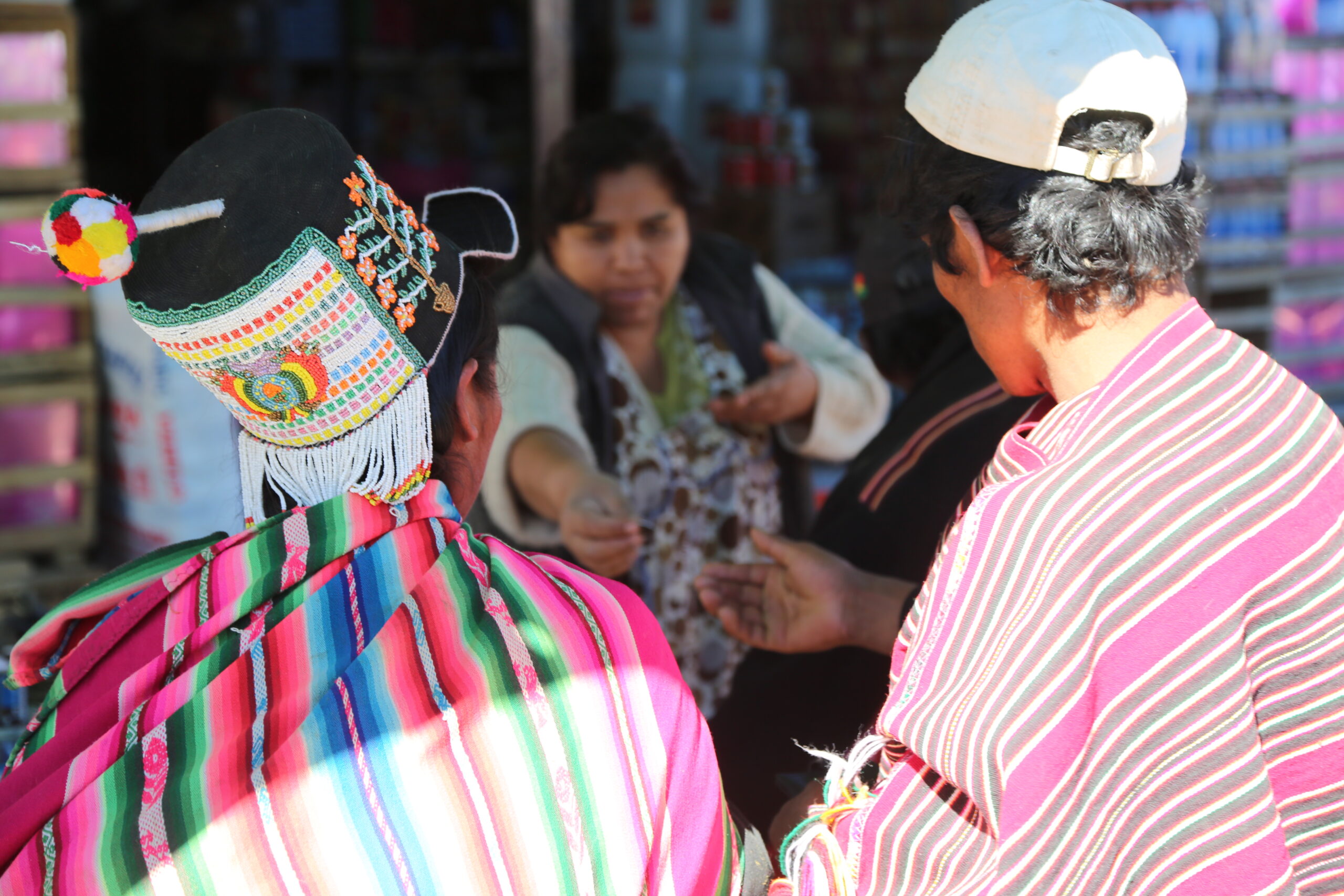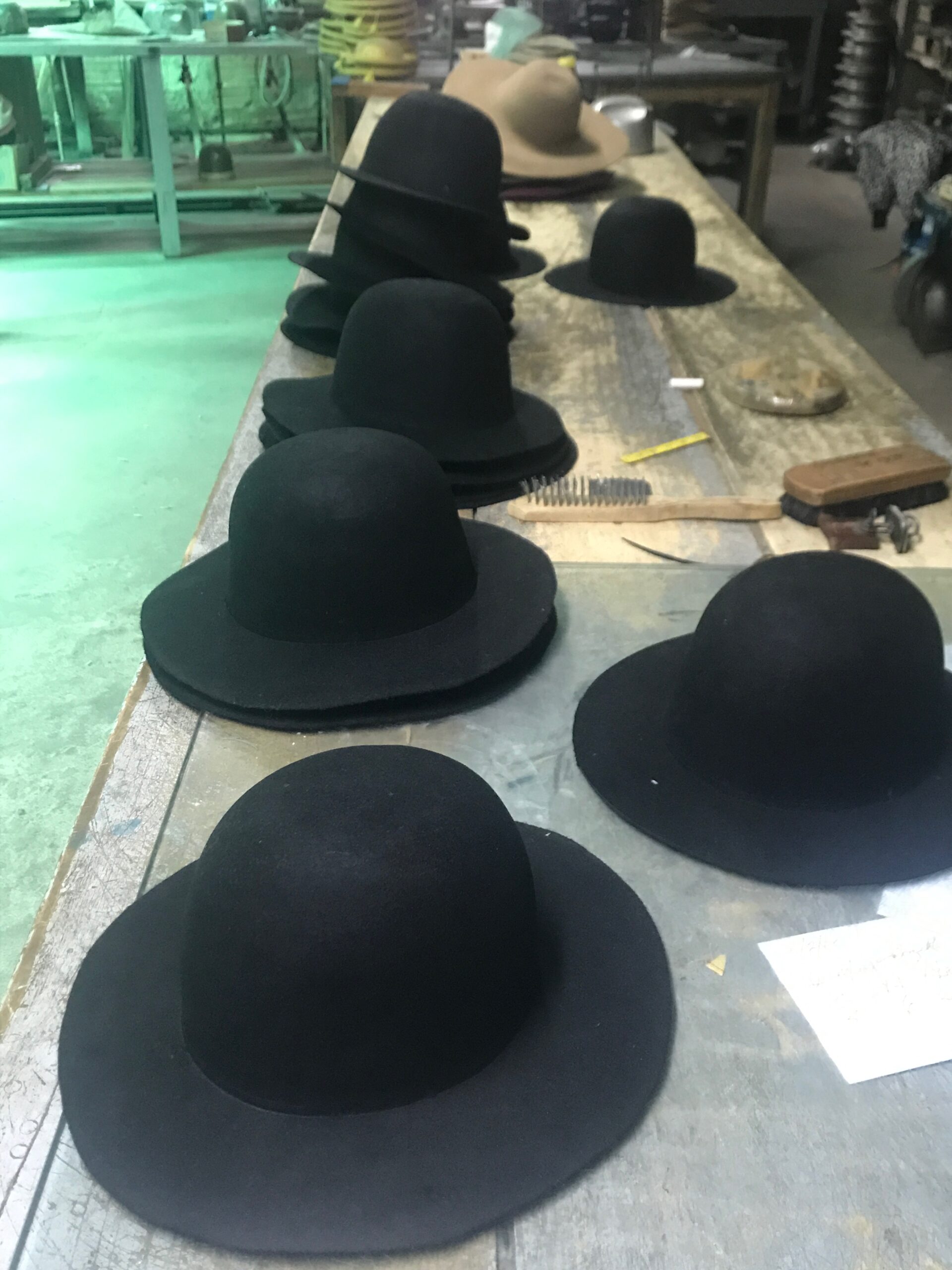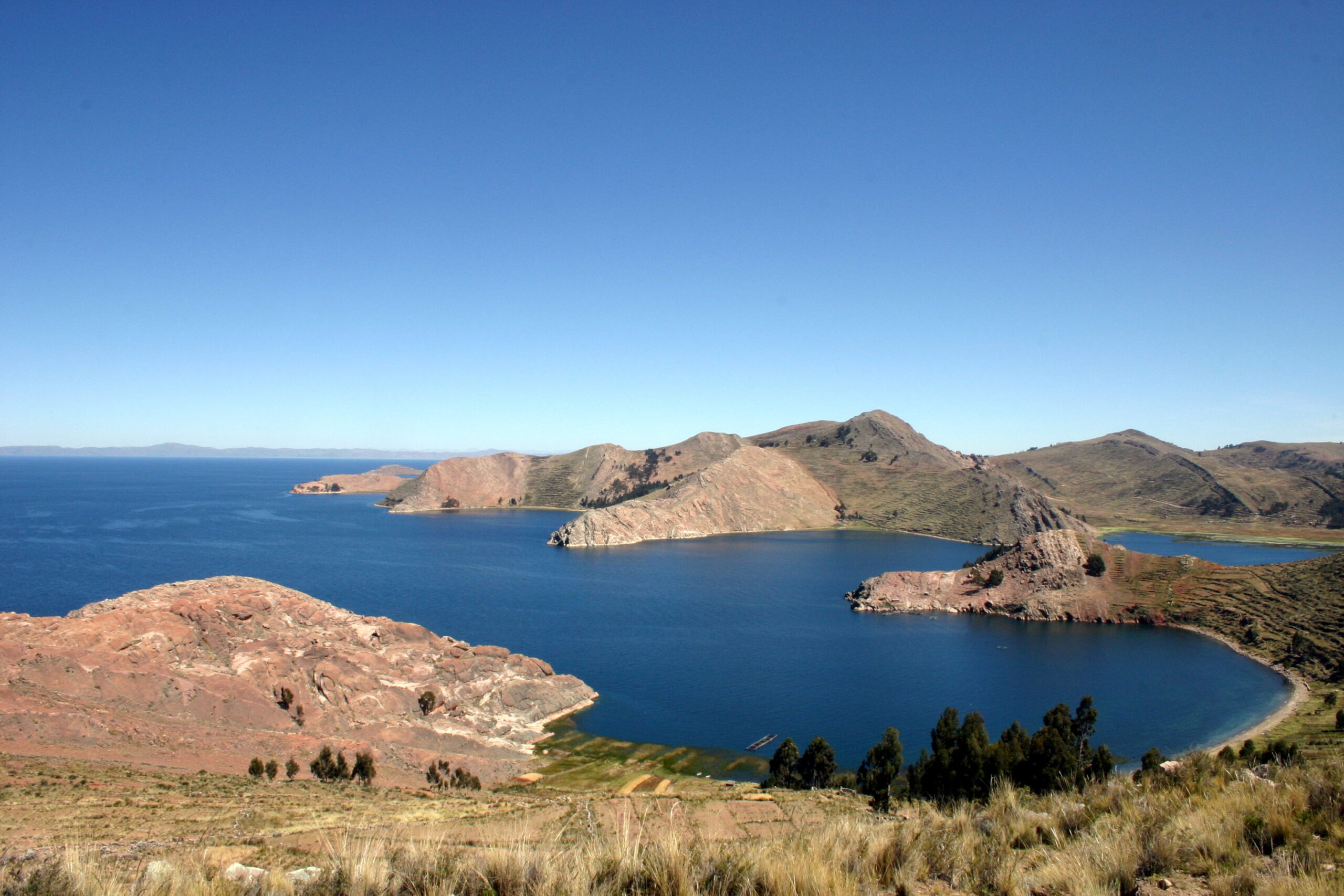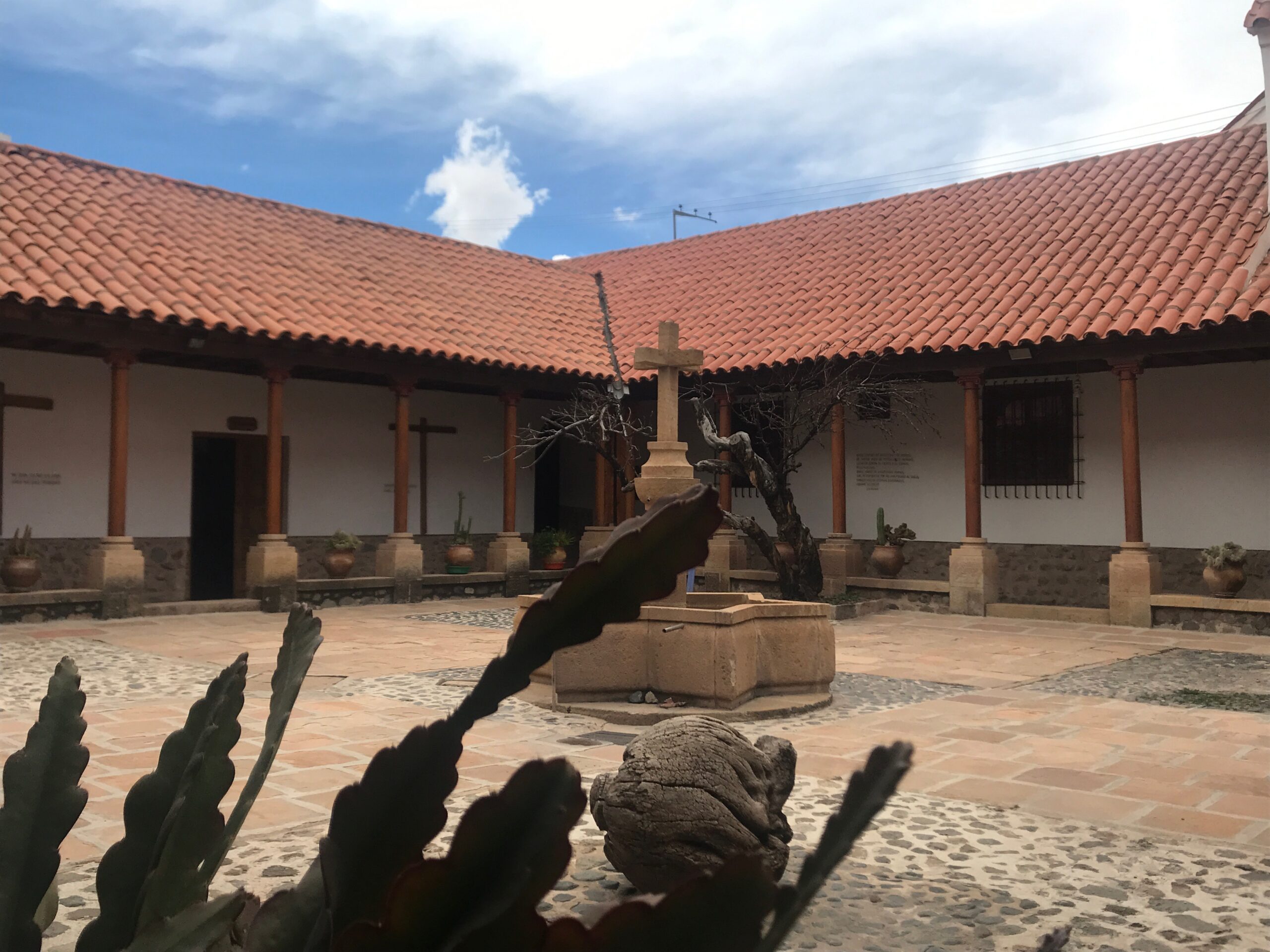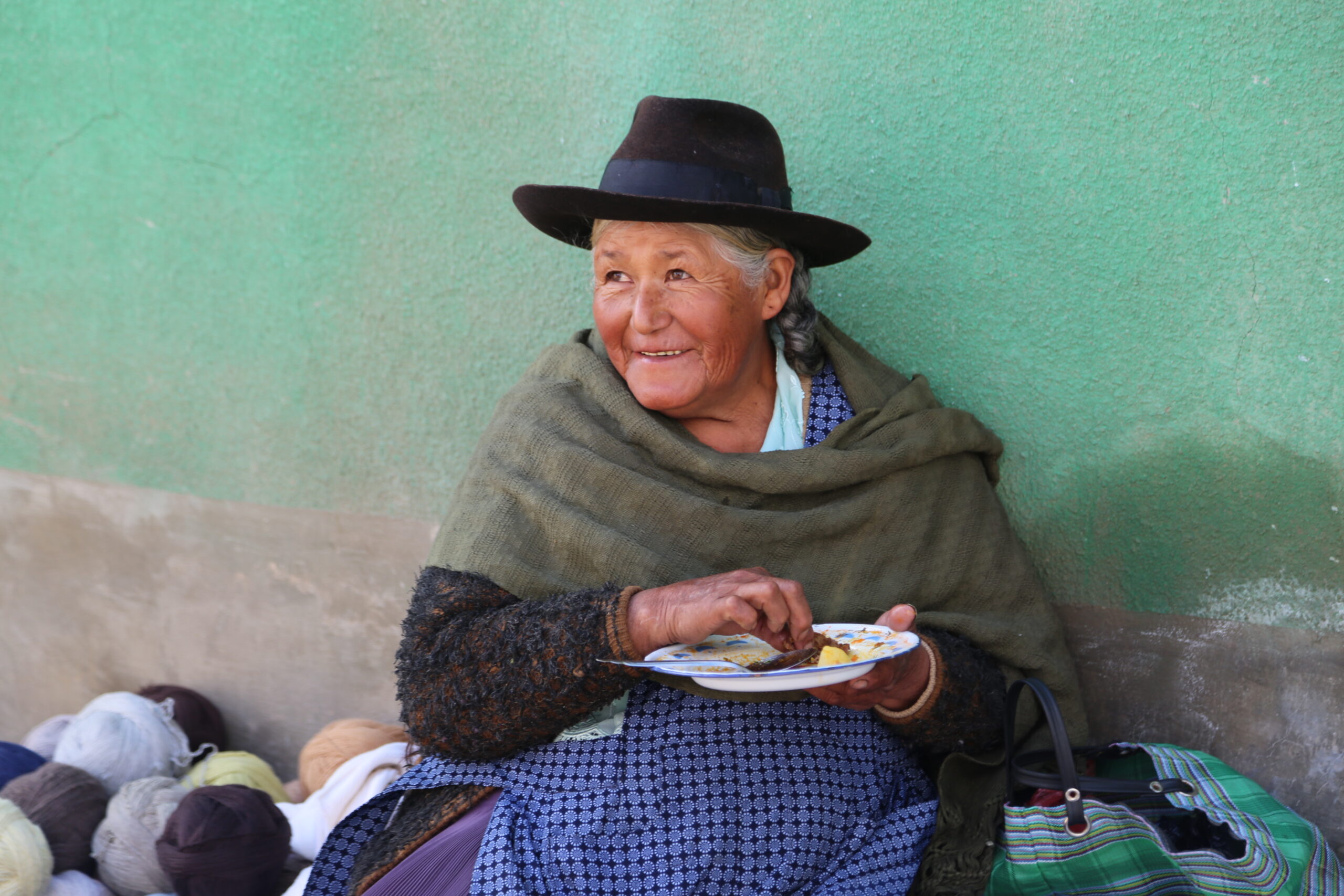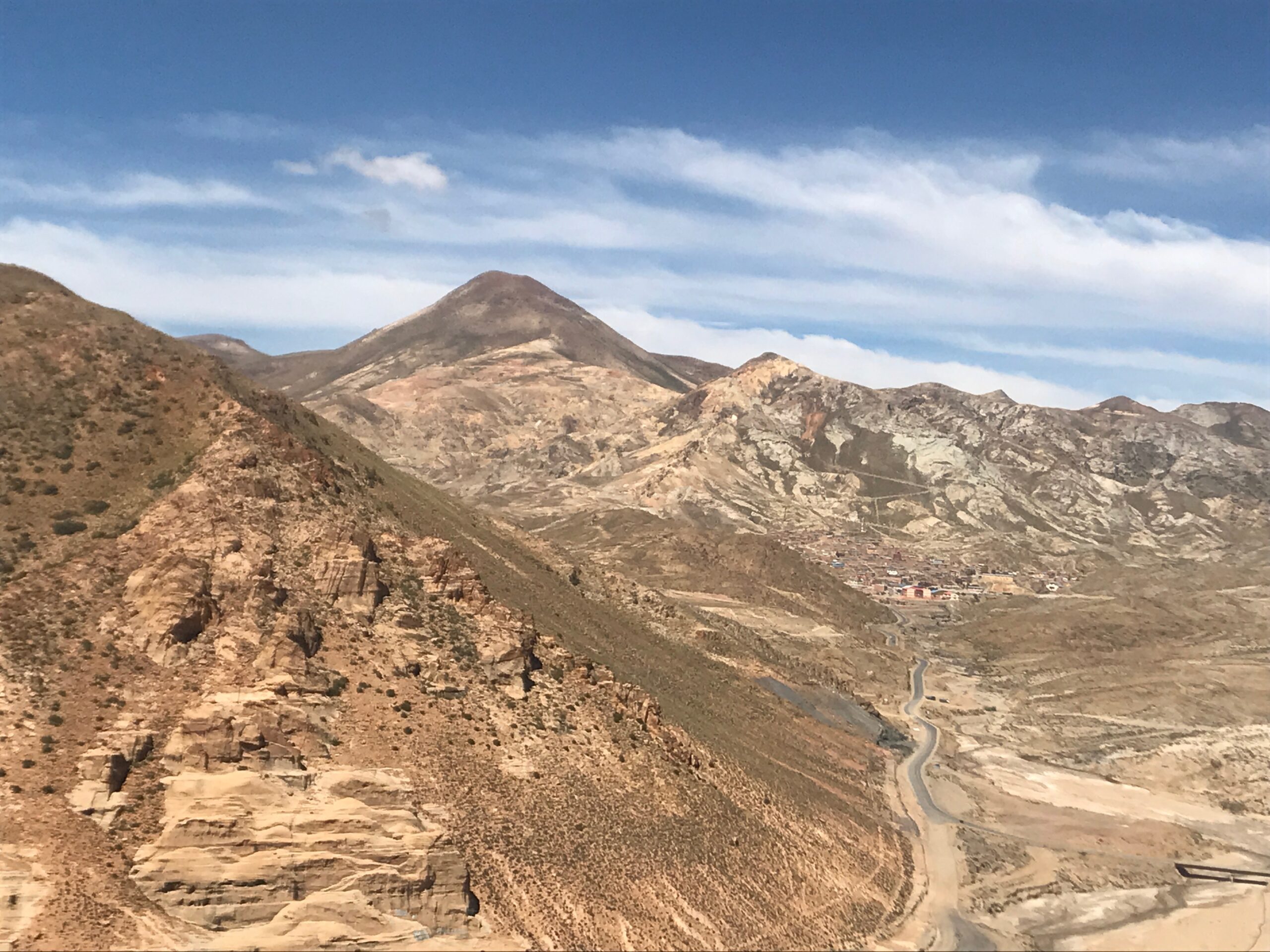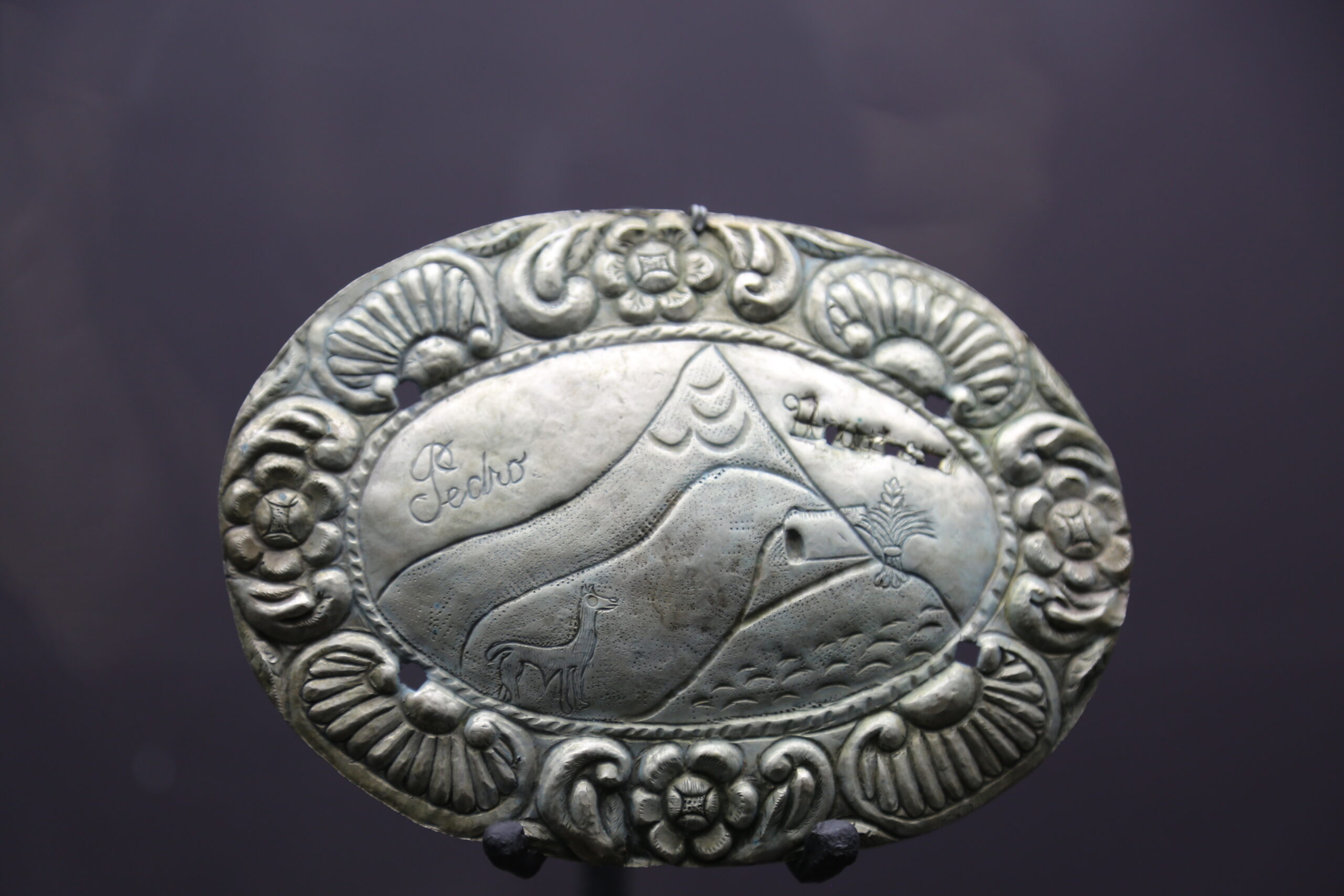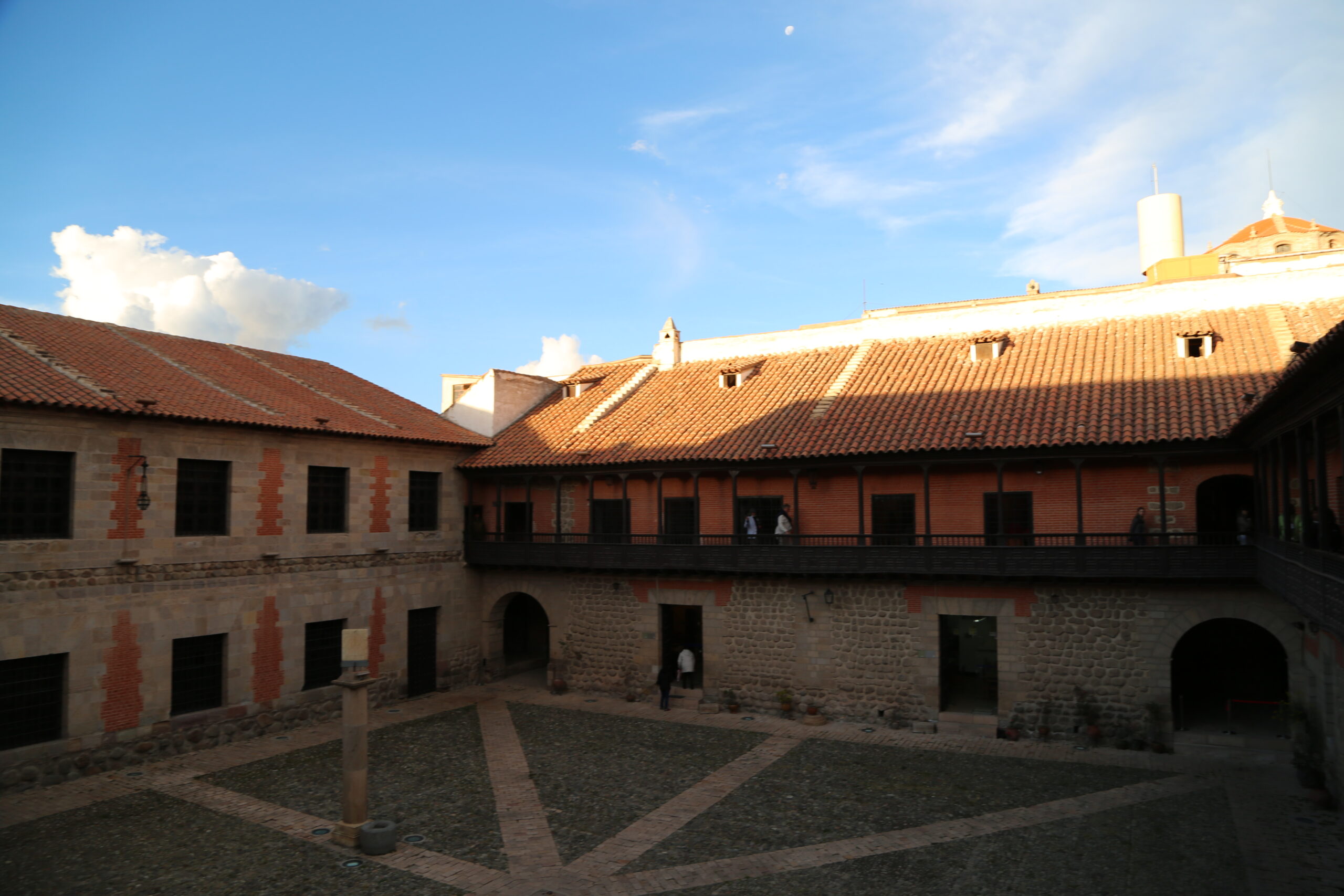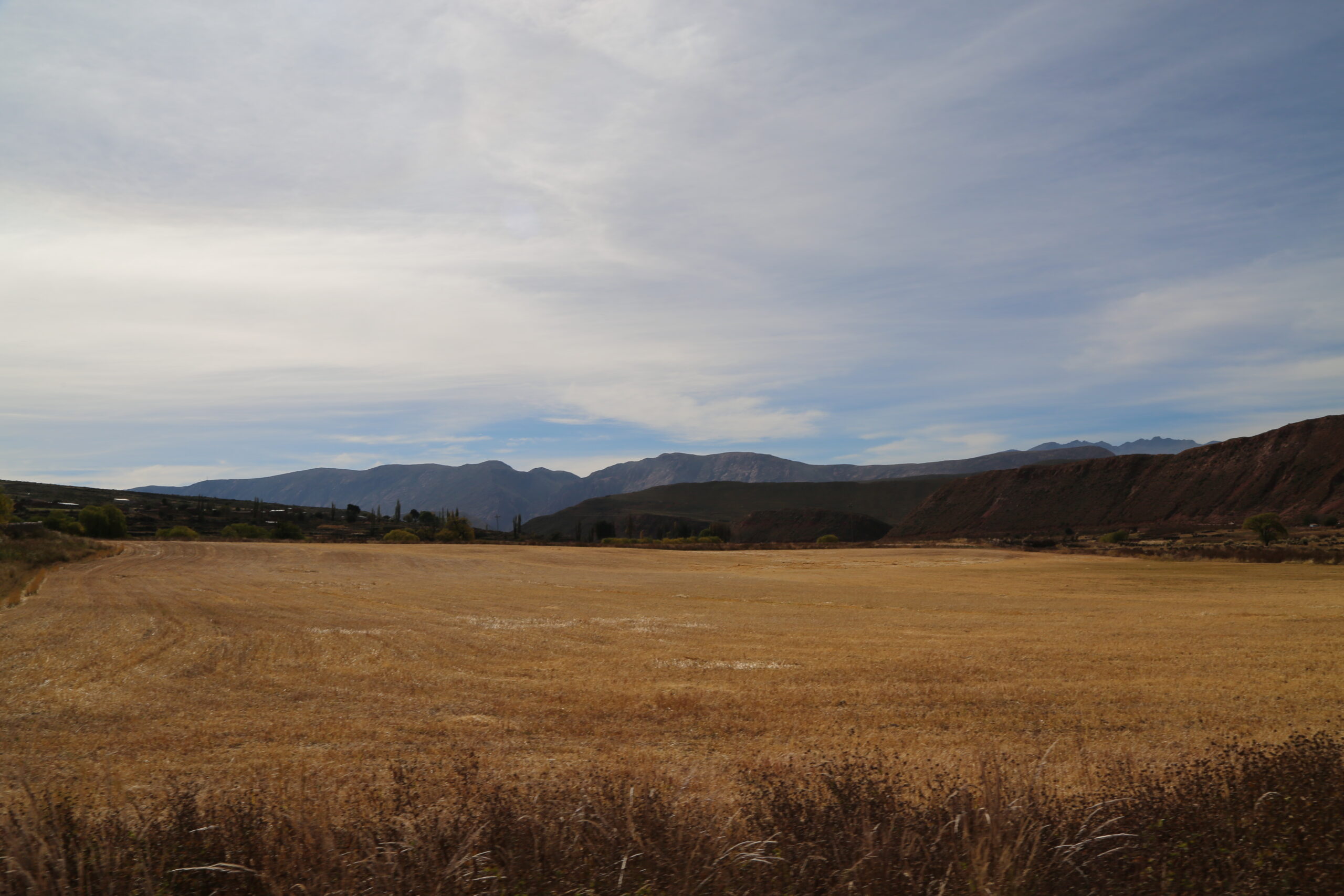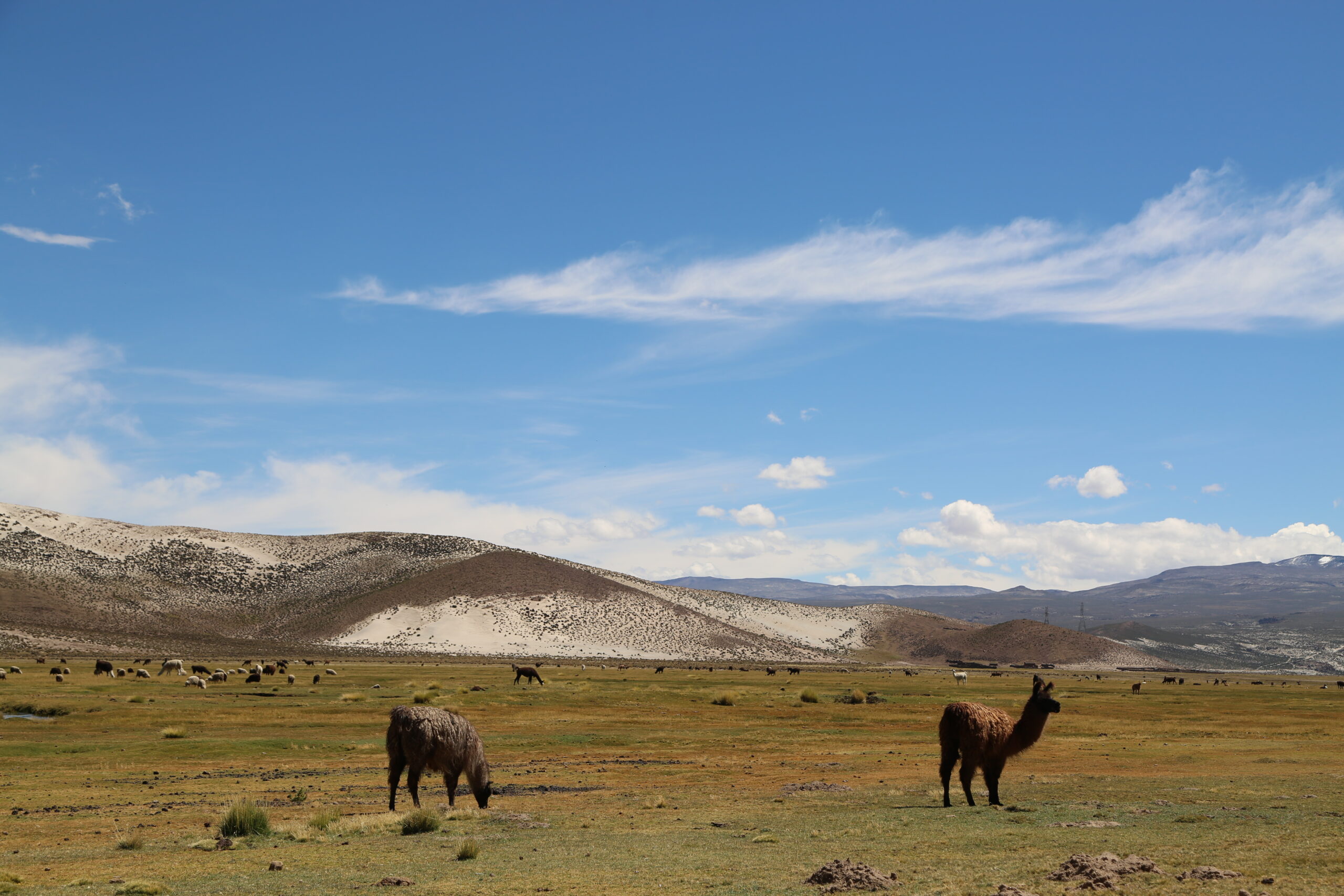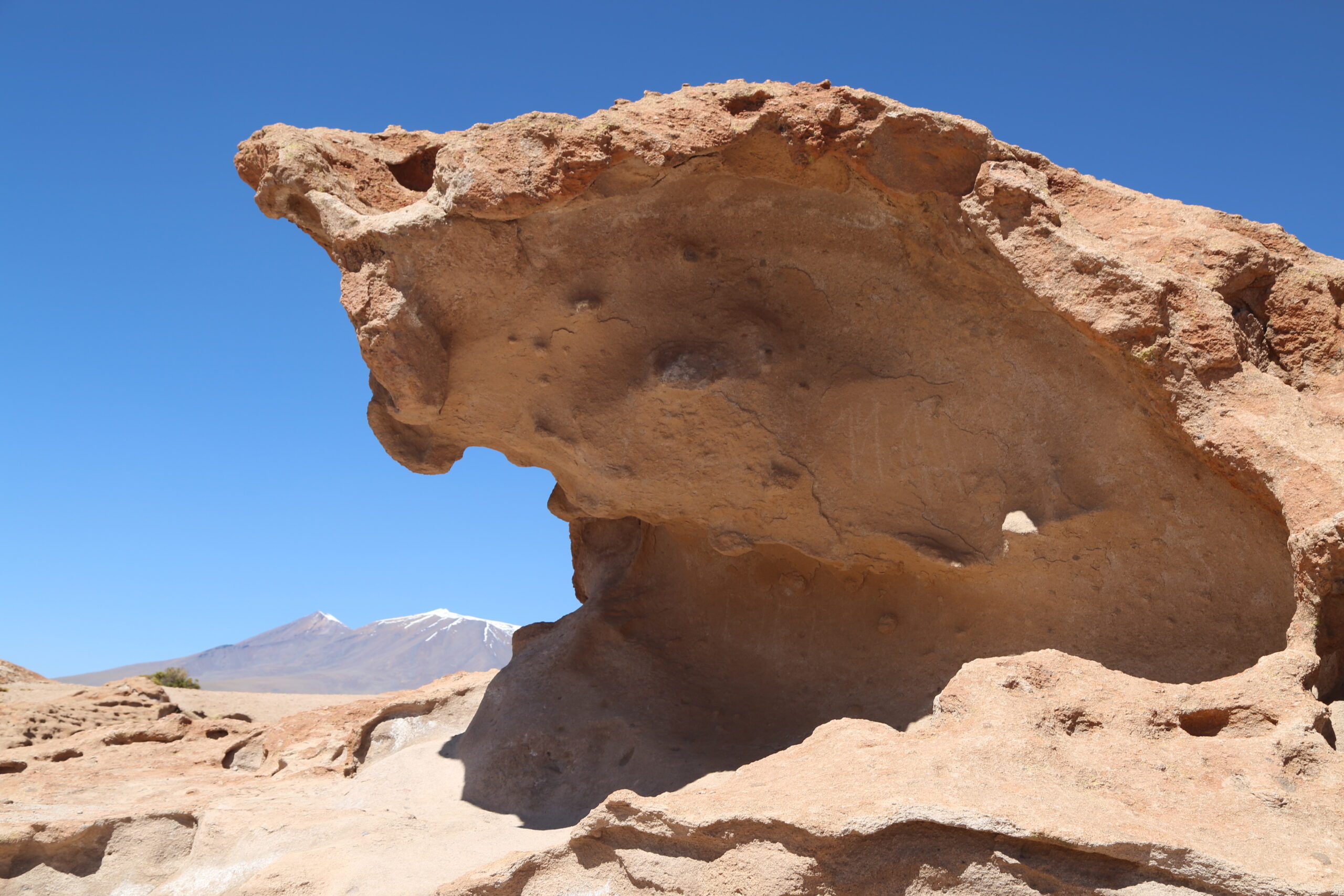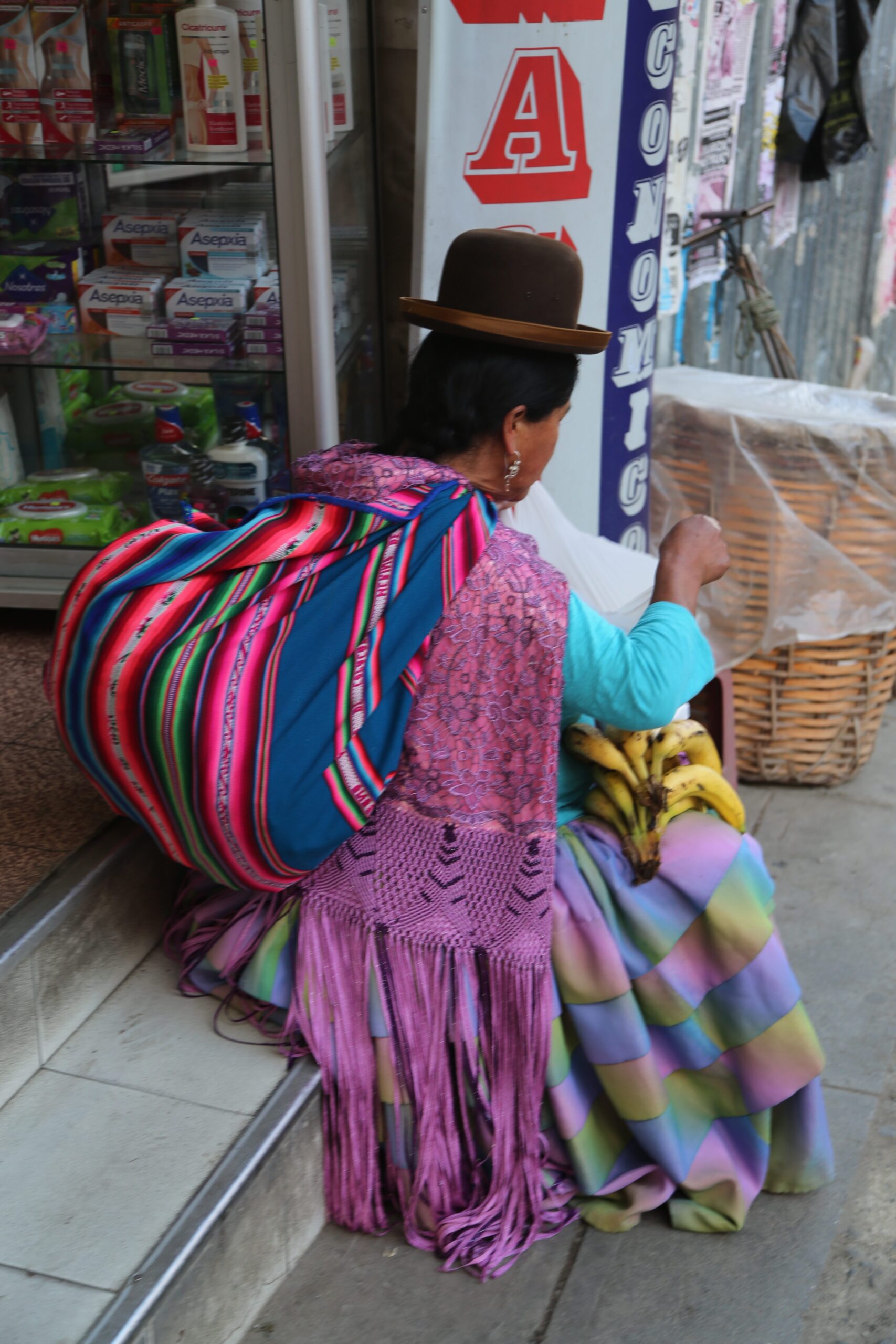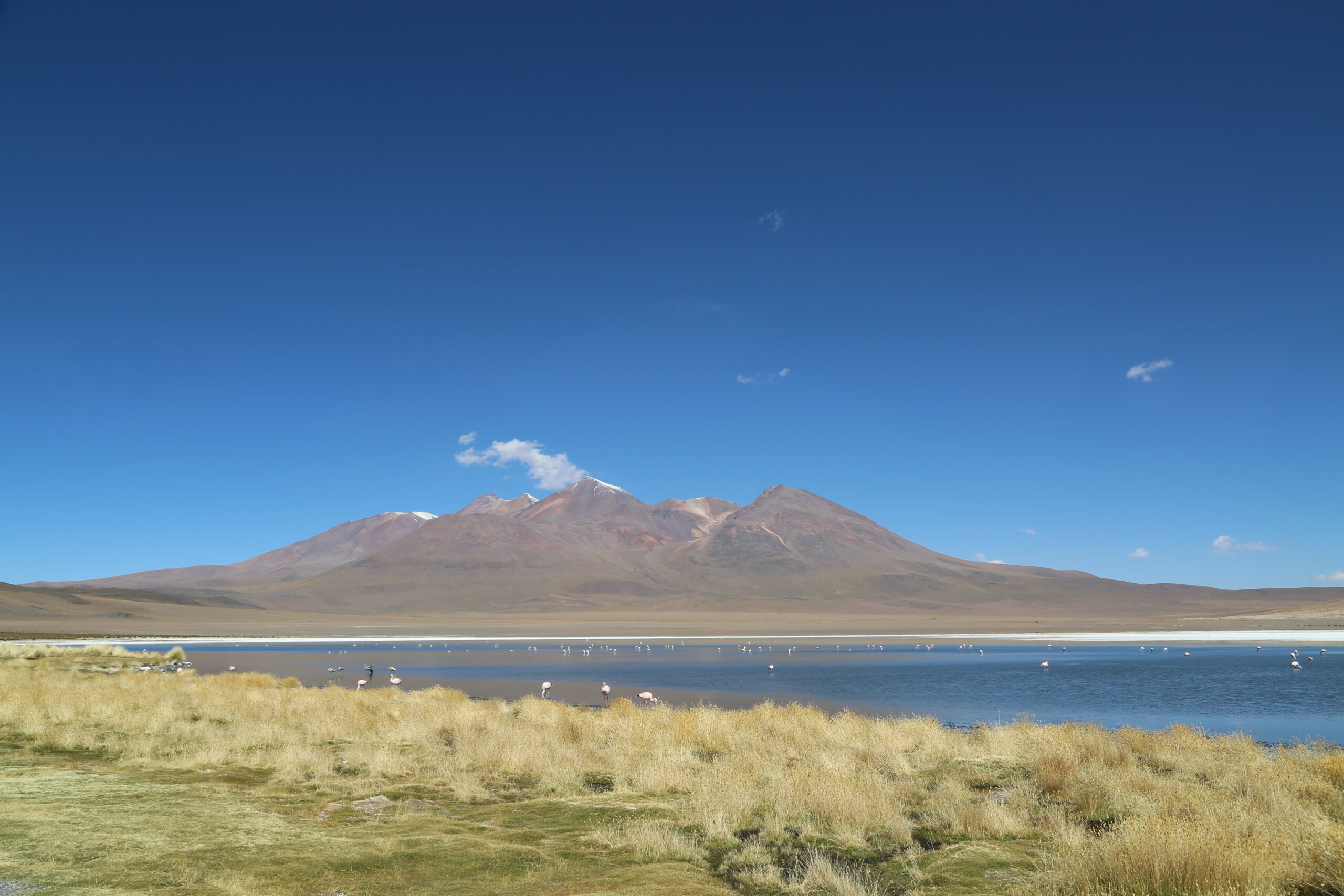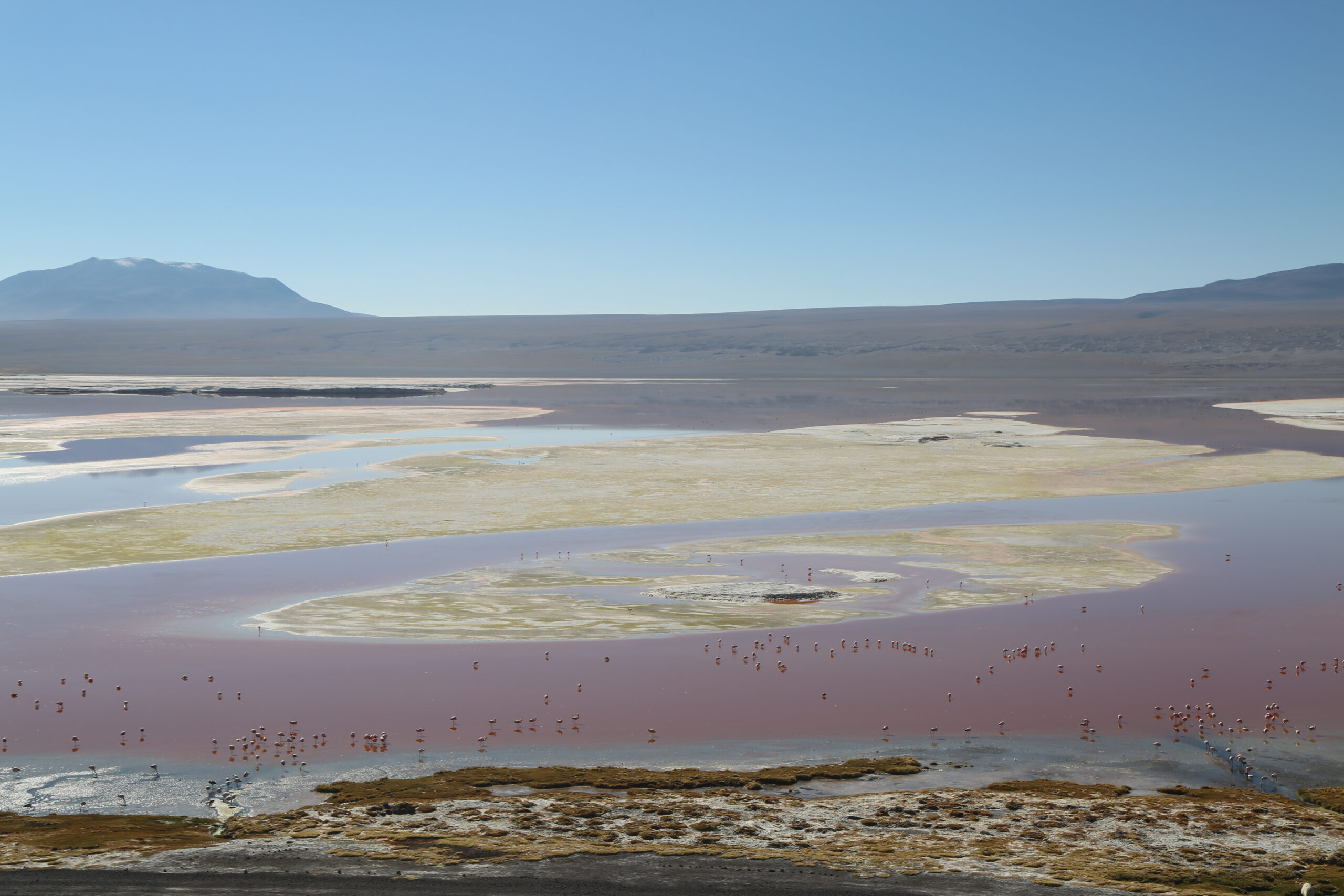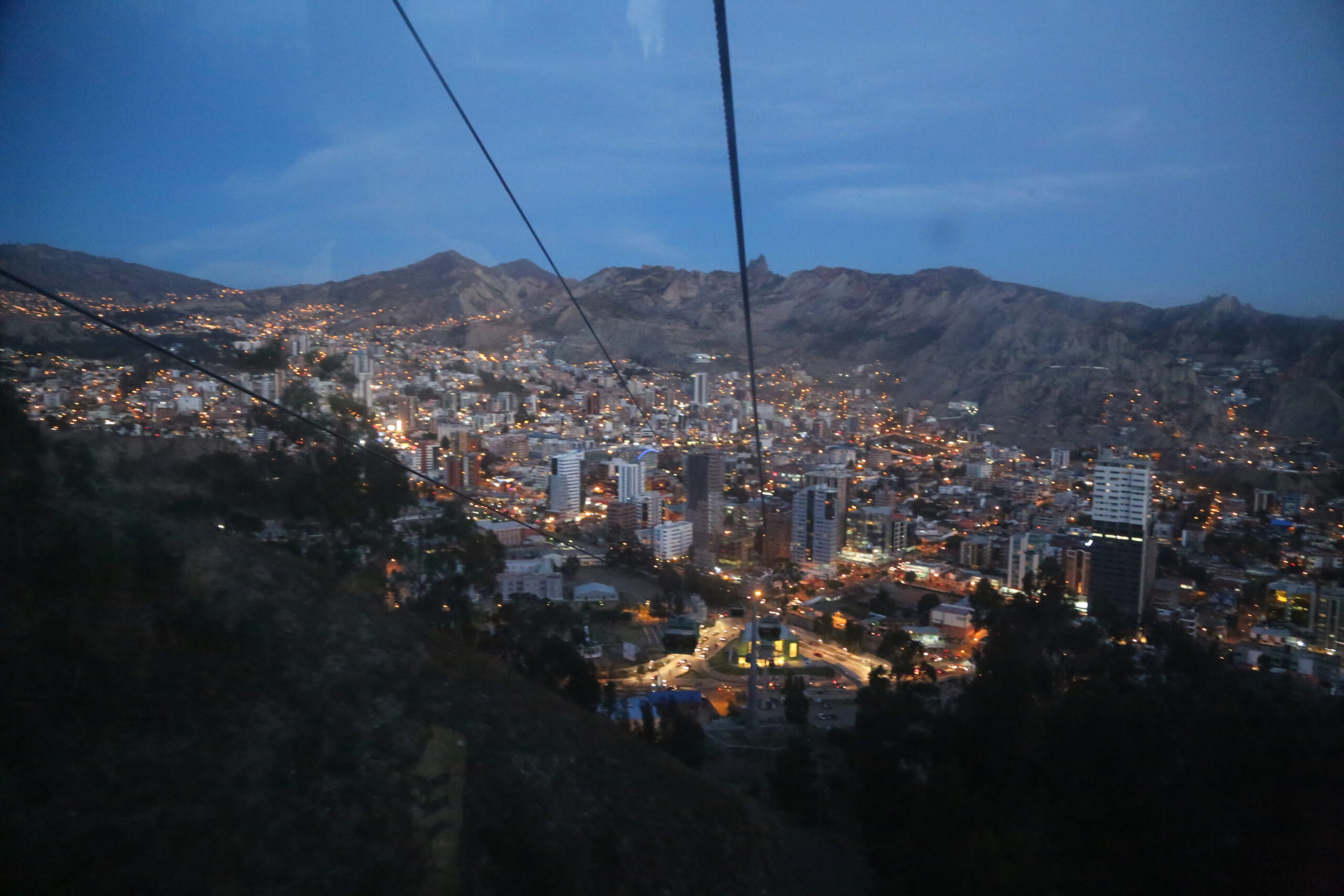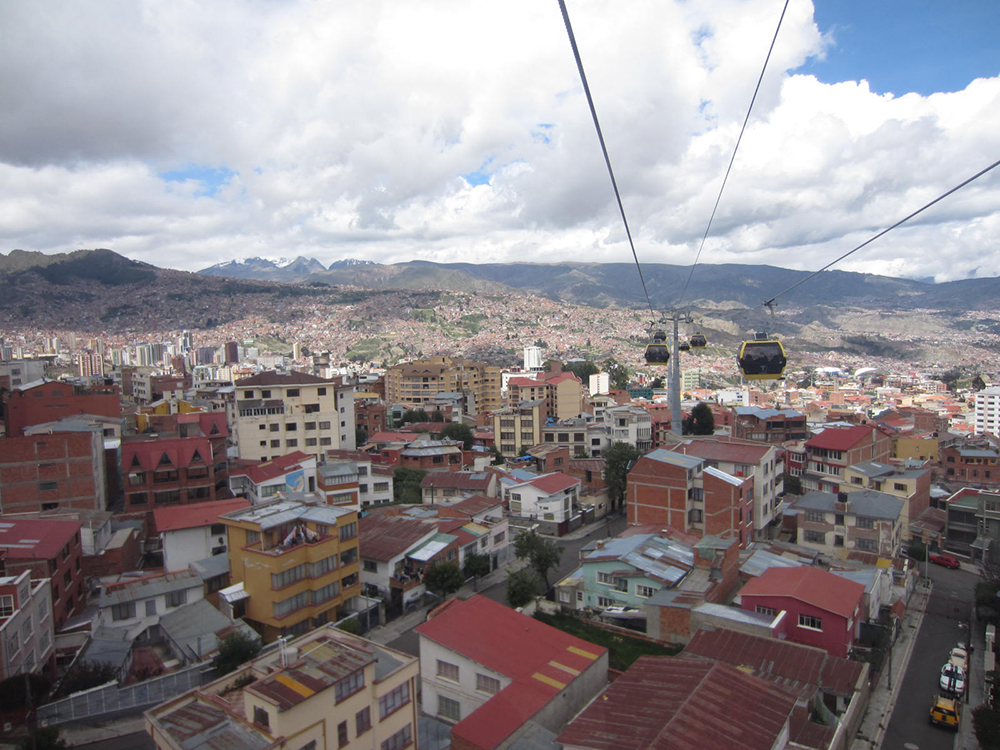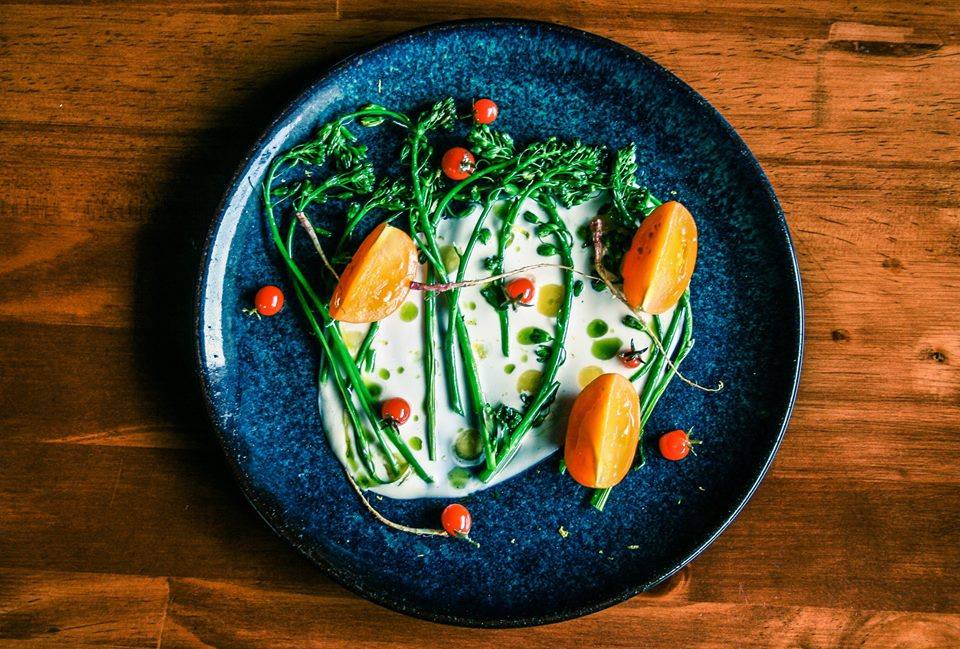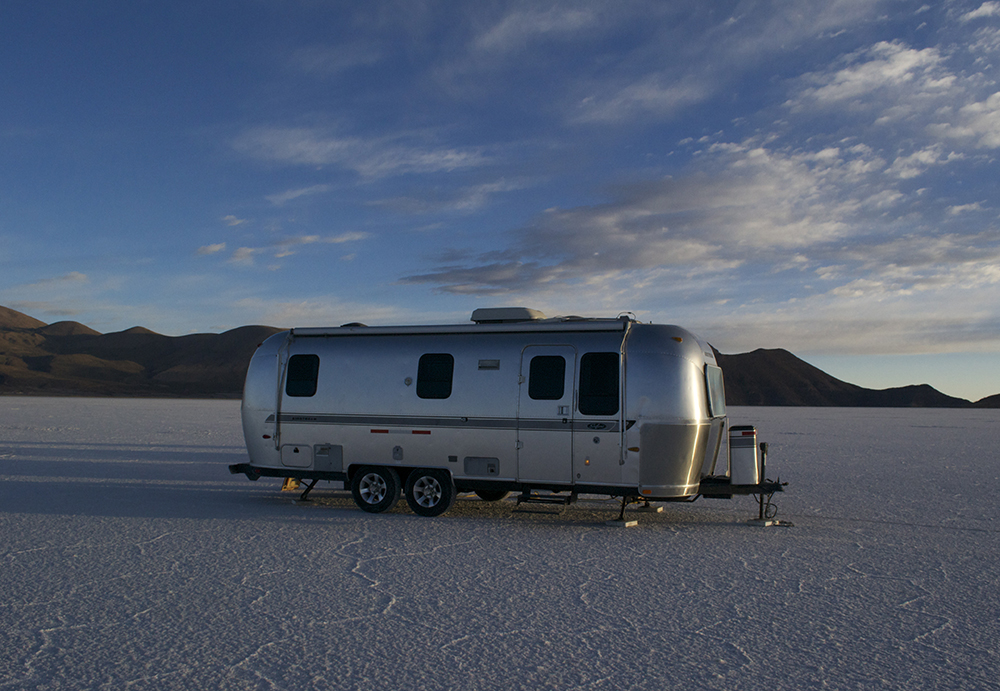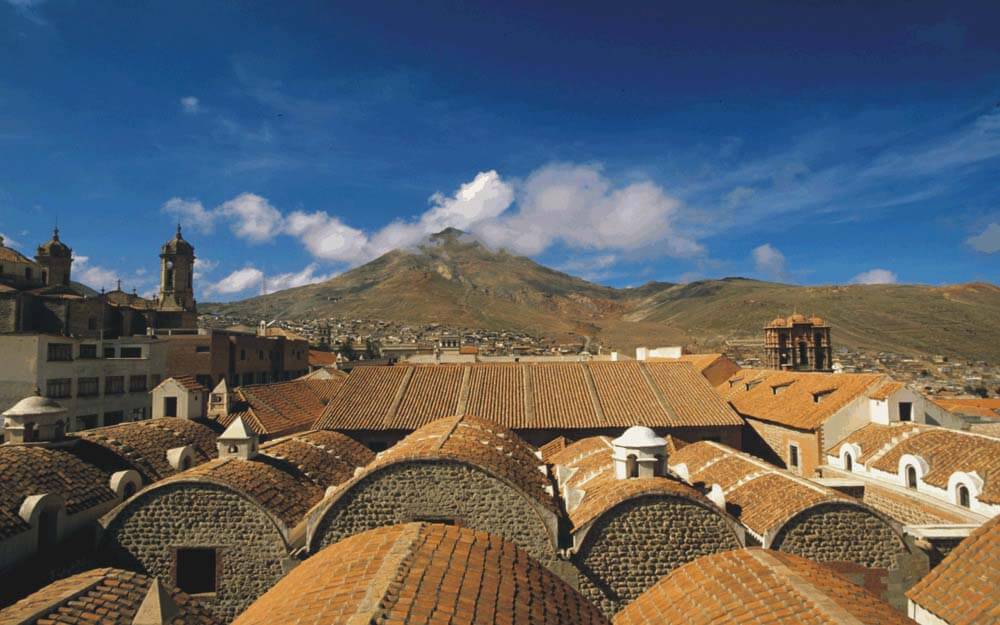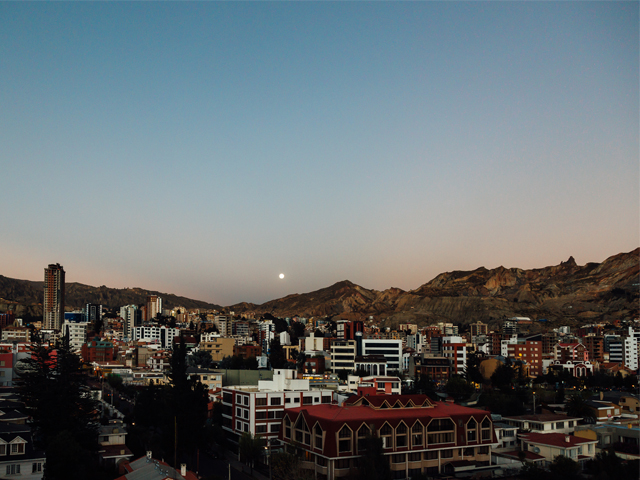Highlights
- Marvel at the mesmerizing white expanse of the Salt flats of Uyuni, a photographer's paradise
- Cruise to the Sun Island on Lake Titicaca, the birthplace of the Incas
- Ride La Paz's cable car network for a unique perspective on the burgeoning capital
- Explore Sucre, Bolivia's most beautiful city, and neighboring Potosí
Bolivia’s position in the Central Andes has made it one of the hubs of Andean civilizations for generations and its historical legacies continue to peek through into modernity. Lake Titicaca holds special cultural significance for the diverse peoples of the region while the burgeoning city of La Paz seems to cling to the spiritual relics of a forgotten past. Sucre and Potosi are infused with traces of the economic gravitas they once held in the Spanish colonies. But Bolivia is not just a land of historical and political intrigue; the iconic Salar de Uyuni is otherworldly in its ethereal splendor and Eduardo Avaroa National Reserve is not only visually spectacular, but filled with a fascinating mix of flora and fauna. Bolivia as a destination is simultaneously stunning and rustic, demanding a true spirit of adventure from travellers who are prepared to forgo elements of comfort for the remarkable rewards of traversing this country’s terrain. On this 10-day Bolivia: Salt flats and silver itinerary, experience the essence of this rich region.
Daily Summary 10 Days / 9 Nights
- Day 1
La PazView on map
Arrival to Bolivia
An English-speaking Aracari representative will greet you at your international arrival with a customized welcome pack, complete with a booklet of your trip itinerary and other useful information. You will then be whisked off to your hotel in La Paz and assisted with all check-in procedures.
Accommodation options- Day 2
La PazView on map
City Highlights of La Paz
La Paz is a city where indigenous, colonial, and modern customs all meet all under the watch of the majestic Illimani mountain. Explore the downtown colonial city center in the morning where you can peruse the Witch's Market, visit the impressive Museum of Ethnography and Folklore and ride the cable-car public transport system for panoramic views of the city. You'll get a chance to stop and sample salteñas, a Bolivian specialty snack.
Enjoy lunch at Ali Pacha, serving up a gourmet plant-based menu that champions micro-producers from around Bolivia. In the afternoon, choose from more of the city's highlights depending on your interests. The most popular option is to drive to the surreal Moon Valley on the city's outskirts. A series of polychromatic clay formations, this natural maze of canyons and spires in hues of beige, red and purple is a unique sight.
Alternatively, in the city center, you can visit Salar Galería featuring work by Gastón Ugalde, Bolivia’s most celebrated living artist. Ugalde is referred to by critics as the ‘Andean Warhol’. Or ride the cable car to El Alto district to tour the colorful and flamboyant Cholets buildings in this neighborhood built by famed artchitect Freddy Mamani. Beer-lovers will enjoy the option to visit a craft brewery which produces beers using Bolivian ingredients. A tour of the production facilities is rounded off with sampling the craft beer. Visiting La Paz with an expert guide, your visits will be tailored to your interests.
Accommodation options0- Day 3
La Paz– Lake TiticacaView on map
Visit Lake Titicaca and optionally Tiwanaku Ruins
Leave La Paz for the tranquility of Lake Titicaca by road. En route, visit a traditional totora reed boat workshop. These boats are made by the younger generation of the Limachi family, who built the original reed boat used by Norwegian explorer Thor Heyerdhal for his Kon-Tiki raft expedition across the Pacific Ocean. Alternatively, drive to Lake Titicaca via Tiwanaku archaelogical ruins, a UNESCO World Heritage site belonging to one of the most important pre-Inca civilizations.
Arrive in Copacabana on the shores of Lake Titicaca. Copacabana is a popular religious pilgrimage site and home to a 16th-century Cathedral. Here you will embark on your speedboat ride across tohe deep blue waters of the lake to the Sun Island. Enjoy a local lunch featuring Apthapi, a traditional Bolivian meal for travelers. Enjoy the scenery from the Sun Island, optionally hiking to Pilkocaina temple of the southern tip, before reaching your accommodation for the night.
Accommodation options- Day 4
Lake Titicaca - La PazView on map
Visit the Sun and Moon Islands
Waking up on Lake Titicaca, hike to the village of Yumani after breakfast, passing typical agricultural terraces along the way. Descend the “Grand Stairs” - over 200 steps built by the Incas - and taste the water of the Sacred Fountain, believed to provide eternal youth and happiness. After lunch on Sun Island, cruise by private boat to nearby Moon Island. Like on the Sun Island, pre-Incan civilizations constructed sites here that the Incas later added to. Visit the notable Sacred Temple of the Virgins of the Sun, Iñak Uyu; young women were housed on this island to keep an eternal sacred fire lit.
Afterwards, take a boat ride back to Copacabana and return to La Paz by road. In the evening dine at Bolivia's best restaurant, Gustu. Its founder, Claus Meyer, is the Danish chef behind Denmark's acclaimed two-Michelin star restaurant, Noma.
Accommodation options- Day 5
La Paz – SucreView on map
Sucre City Tour
Fly to Sucre, Bolivia's most beautiful city. Spanish royalty and wealthy families involved with the silver mining in Potosí lived in Sucre. Today, Sucre shares capital city status with La Paz. Its gleaming white stucco buildings and preserved colonial architecture, green parks, and streets lined with cafes and restaurants make it a pleasant and historical city. Besides its aesthetic charm, Sucre has many cultural attractions to visit while strolling around the city. Enjoy a city tour, taking in La Recoleta, Museum Azur and the San Felipe Nery Church. There are many other sites that can be incorporated depending on your interests such as Simón Bolivar Park, the Anthropological and Modern Art Museum, local hat and chocolate factories (must be arranged in advance), and the quarry of Cal Orck’o, outside Sucre, home to dinosaur footprints.
Accommodation options- Day 6
Tarabuco & Candelaria OR Traditional weaving village & hikeView on map
Visit Tarabuco Market or visit traditional weaving villages
Today choose to visit Tarabuco Market and Hacienda Candelaria, or alternatively visit traditional villages in the countryside surrounding Sicre.
Tarabuco Market & Hacienda Candelaria: The market village of Tarabuco and the traditional Hacienda Candelaria, outside Sucre, both offer fascinating insight into traditional indigenous life in Bolivia. Tarabuco is known for its bustling market on Sundays where artisans and weavers arrive early and set up stands to sell and barter their colorful crafts and produce until mid-afternoon. Contnue on approximately 40 minutes to the town of Candelaria, known for producing quality woven textiles. Take a tour of 17th century colonial Hacienda Candelaria where you will enjoy a typical Bolivia countryside lunch. You can also participate in a textile workshop, learning to spin and dye the wool and try your hand at the intricate weaving process.
Traditional weaving village visit: Towards the northwest of Sucre lies the Cordillera de los Frailes mountain range, notable for its intense colors thanks to its mineral wealth. This area shelters the small weaving villages of Potolo and Maragua, home to the Jalq’a ethnic group. These Quechua-speaking native communities are known for their exquisite handmade textiles which detail llamas, vicuñas, eagles, frogs and imagery important to them. Visitors to either village are offered a glimpse into daily life in communities that have changed little over the years. You can optionally hike in this region before visiting the villages - follow an Inca trail, visit rock paintings in caves of Puma Machay, or hike the crater of Maragua volcano, noteworthy for the dinosaur footprints embedded in the terrain. You’ll then visit Maragua village, where you can visit indigenous homes where women produce their exquisite textiles art.
Accommodation options- Day 7
Sucre - PotosiView on map
Potosi Royal Mint
Your guide and driver will meet you at your hotel this morning for the approximately three hour drive from Sucre to Potosí. Now a UNESCO World Heritage city, the city retains elements of its former grandeur. Today you will visit a few places of interest in the center of Potosí including the Casa de la Moneda (Royal Mint), filled with fascinating wooden machinery used to make coins for the Spanish colonies. You’ll also visit the local miners’ market and delve into functioning silver mine for a glimpse at the industry's past and present, with an insight into the challenging conditions miners still undergo to this day. After lunch at a local restaurant, head to the Convent of Santa Teresa, which, besides its aesthetic beauty, is a great representation of religious life during colonial times. Aracari can also arrange exclusive access to other historic sites in Potosi, such as a tour of the National Archives with the director, and a visit to the rooftop of the San Francisco Church. At the end of the day, you will transfer by road to Uyuni accompanied by your guide.
In Uyuni, you can either stay in a memorable hotel made entirely from bricks of salt, or upgrade to a deluxe airstream camper located on the Salar's northern shores. There are a total of three campers on the Salar, each kitted out with a private bathroom with hot shower, heating and mini-bar. A dedicated chef rustles up gourmet food and cocktails. If you stay in the Deluxe Airstream camper, the itinerary details will vary from this outline.
Accommodation options- Day 8
Salar de UyuniView on map
Full day on the salt flats by 4x4
The largest salt flat on Earth, Salar de Uyuni affords visitors with stunning scenery unmatched anywhere else in the world. Covering 12,000 square kilometers (4,633 square miles) of Bolivian Altiplano, the vast salt flats are an awe-inspiring natural phenomenon and highly photogenic at any time of year. In the dry season, surreal pentagons of bright white crystalline salt form, while in rainy season the salt flats see a layer of water develop which acts as a natural mirror, reflecting the sky for a fantastic, other-worldly visual display.
In the dry season you’ll see the bubbling ojos del sal ‘eyes of the salt’ and can reach Incahuasi Island, notable for its giant cacti. A short walk here on a petrified coral path offers views, before enjoying a picnic lunch in the middle of the salt flats. In the rainy season, thanks to the layer of water covering the crystalline salt you cannot drive across the salt flats but rather enjoy the spectacular ethereal sight and photography opportunities produced by the salt flats when it has rained. You can also visit the mummies of K’aka. Your exact route will be adapted to the weather conditions and season at the time of your visit. To round off the day, admire sunset over the salt flats.
The unobstructed expanse of the isolated salt flats makes night-time stargazing a truly spellbinding experience, as the full breadth and immensity of the night sky can be observed and appreciated. This is an optional extra.
Accommodation options- Day 9
Small LagoonsView on map
Photograph the Valley of the Rocks and small lagoons
Following breakfast at your hotel, you’ll head south towards the town of San Cristobal, a colonial town that is now the world’s largest source of silver. If interested, you can stop to visit the church, featuring beautiful original frescos on the walls. Take a walk alongside the Alota River, home to much of the region’s birdlife. Enjoy the surreal and highly photogenic landscapes of this region, including the Valley of Rocks, with its unusual rock formations offering great photo opportunities. Enjoy a picnic lunch en route today. In the afternoon, visit the small lagoons of this area, including the Catal Lagoon and Black Lagoon, home to pink flamingos. End the day at Mallku Cueva, for dinner and to spend the night.
Accommodation options- Day 10
Eduardo Avaroa ReserveView on map
Visit Laguna Colorada, natural Geysers and drive through the Dali Desert
After breakfast, you’ll continue south with your private vehicle and guide, towards the Eduardo Avaroa Reserve. Today you will stop at the Laguna Colorada which displays various hues of red, depending on the light conditions. It is also the most important nesting site for three types of South American flamingoes. Continue to the Sol de Mañana Geysers, with intensely active fumaroles and volcanic craters filling with boiling lava. Afterwards, head to the Chalviri Lagoon, where you have the opportunity the take a dip in the natural hot springs.
Finally, pass through Dali’s Desert and make your way to the Laguna Blanca then the Laguna Verde, which looks like a liquid emerald, varying between shades of turquoise and green. Along the way you’ll stop for a box lunch, and have many opportunities to enjoy and photograph the stunning scenery.
At the end of the tour, you’ll transfer back to Uyuni, passing through Andean villages and the Valley of the Rocks.
Aracari specializes in tailormade travel. Here are just some of our further trip suggestions. Contact us for more bespoke ideas to inspire your travels.
Featured Destinations
Journey pricing as of 2025
Basic Pricing - US$8,880 per person
This is a sample journey and can be tailored to your interests and travel style.
- Based on two people travelling together in double or twin occupancy
- Price is per person for the full 10-day itinerary
What's Included?
This journey is based on two people travelling together in double or twin occupancy, excluding flights (international and domestic).
- Includes all specified services in the journey description
- All transfers and entrance fees
- A welcome pack on arrival including: a pre-loaded cell phone to contact your travel consultant at any time, a printed booklet packed with insider tips alongside your detailed journey and up-to-date recommendations on dining and shopping
- Hand-selected English-speaking guides
- Specialist guides (where noted)
- 24-hour support from our locally based team
- 9 nights in a hand-picked and personally tested selection of Bolivia’s finest accommodation
What's not Included?
- Domestic flights (quoted separately).
- Alcoholic beverages.
- Tips.
- Travel Insurance.
- International Flights and airport taxes.
- Neither personal expenses nor any other service not specified in the itinerary.
Bolivia: Salt flats and silverExperience the essence - Day 2

